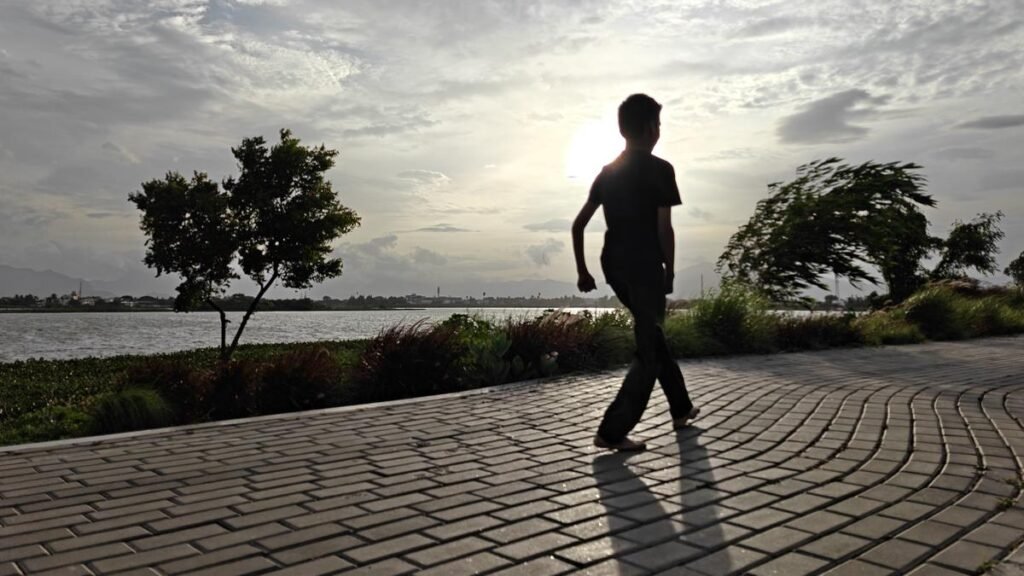According to the World Health Organization (WHO), 1 in 3 adults globally — about 1.28 billion people are living with hypertension, with nearly half unaware of it. In India, the burden is steep: over 220 million people live with hypertension, with detection and follow-up rates particularly low among younger adults and in rural populations.
“Even people in their twenties and thirties are now showing signs of early hypertension,” says T.S. Srinath, senior consultant, cardiology, SIMS Hospital, Chennai. “But they don’t get tested until symptoms appear, often too late.” Therefore, doctors are pointing to an underused yet effective pair of tools — two minutes of regular movement, and the two-minute walk test (2MWT).

Movement as preventive care and diagnostic tool
First, there’s movement as medicine. Multiple studies — including recent ones by the American Heart Association show that two-minute activity breaks taken every 30–60 minutes can significantly reduce average blood pressure and improve vascular health, particularly for desk-bound adults.
“Physiology is cumulative,” explains Surya Prakash S., consultant, Institute of Cardiac Sciences, SRM Global Hospitals. “Even just two minutes of walking every hour helps maintain blood flow, prevents arterial stiffness and reduces stress hormones, all of which matter in long-term BP control.”
Simple interventions, like walking during phone calls, stair use, or pacing while watching TV — can yield benefits over time. For a country with growing rates of sedentary behaviour, this offers a low-cost and scalable solution.
Then comes the two-minute walk test — a short submaximal exercise assessment initially used to gauge endurance in elderly or cardiac patients. Today, clinicians are repurposing it to spot early signs of cardiovascular dysfunction, especially in asymptomatic or newly-diagnosed hypertensive individuals.
“We check how much the blood pressure rises, how fast heart rate recovers, and whether the person reports symptoms like fatigue, dizziness, or breathlessness,” explains Madan Mohan B., Interventional Cardiologist at MGM Malar Hospital, Chennai. “A systolic jump over 20 mm Hg or a delayed drop in heart rate after exercise signals poor autonomic control and vascular stress, both early signs of future risk.”
According to guidelines, a heart rate recovery of less than 12 bpm in one minute is associated with higher mortality and cardiovascular events.

Call for integrating 2MWT in routine tests
Prakash Ayyadurai, consultant, orthopaedics & sports medicine, explains his clinical experiences in using the 2MWT to uncover exercise intolerance in patients who otherwise present normal resting vitals. “A lot of people pass routine tests but struggle when asked to walk even two minutes,” he says.
“They show palpitations, fatigue, or sweat profusely. That exertion response can reveal hidden prehypertension or vascular rigidity.” Similarly, Dr. Srinath notes that in patients with mild or labile hypertension, the 2MWT is useful not only for screening but also for monitoring treatment outcomes. “If BP response improves and heart rate normalises faster over time, it tells us the patient is improving.”
Doctors emphasise that India must integrate simple physical activity-based screenings into routine health checks — especially in primary care and semi-urban areas where access to advanced diagnostics is limited.
“Two minutes of walking can be far more revealing than sitting in a chair for a BP reading,” says Dr. Surya Prakash. “The test costs nothing, requires no machines, and adds meaningful insight into cardiovascular fitness.” Even if not diagnostic, the test helps triage patients into low, moderate, and high-risk groups for further testing like ambulatory BP monitoring, echocardiography, or stress ECG.

Lifestyle, risk and the way forward
While WHO data and Indian Council of Medical Research (ICMR) surveys show India’s hypertension burden is high, doctors say the face of the condition is changing .“Young people are stressed, immobile, and consuming too much sodium and processed food,” says Dr. Srinath. “But many still think hypertension is a disease of the elderly.” Still, not all trends are bleak. Dr. Ayyadurai sees a growing interest in preventive fitness among urban youth.
“In the last five years, I’ve seen more 20- and 30-year-olds coming in not with problems, but to learn how to stay fit. It’s an encouraging sign,” he said.
From preventing vascular strain through micro-movement to detecting hidden dysfunction through the 2MWT, these short interventions are fast becoming powerful tools in preventive care.
Published – July 17, 2025 01:29 pm IST

